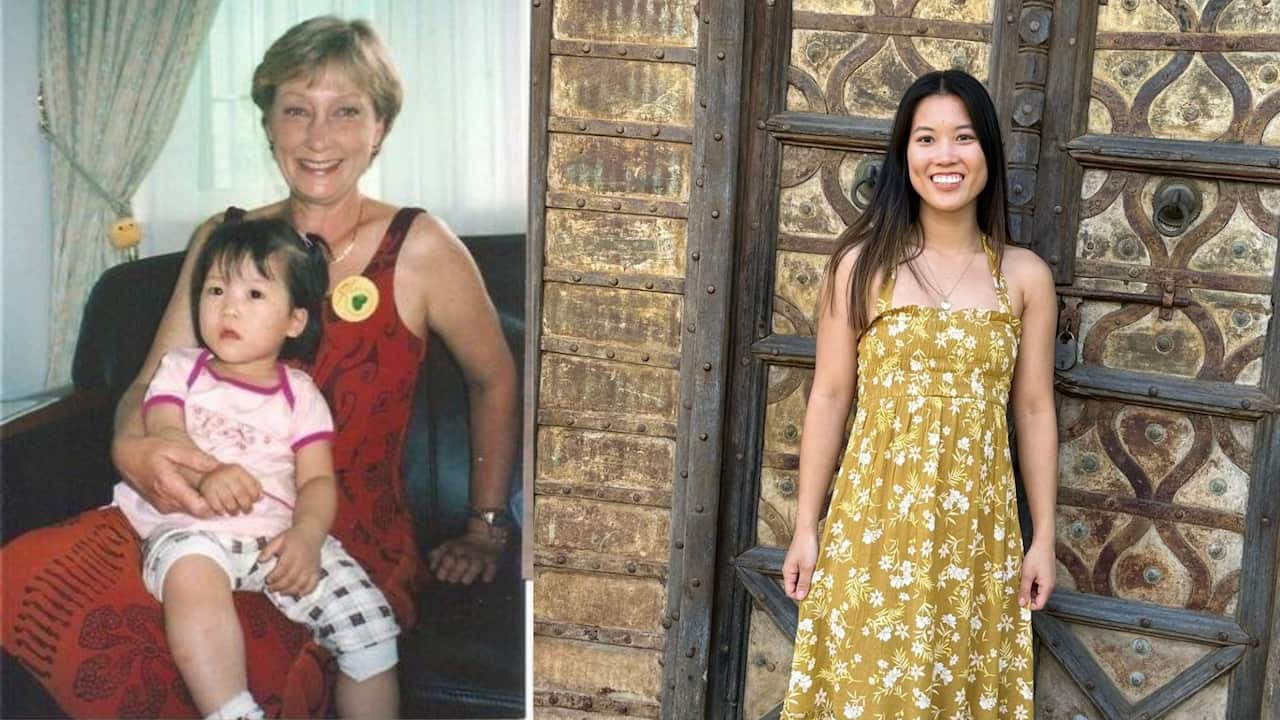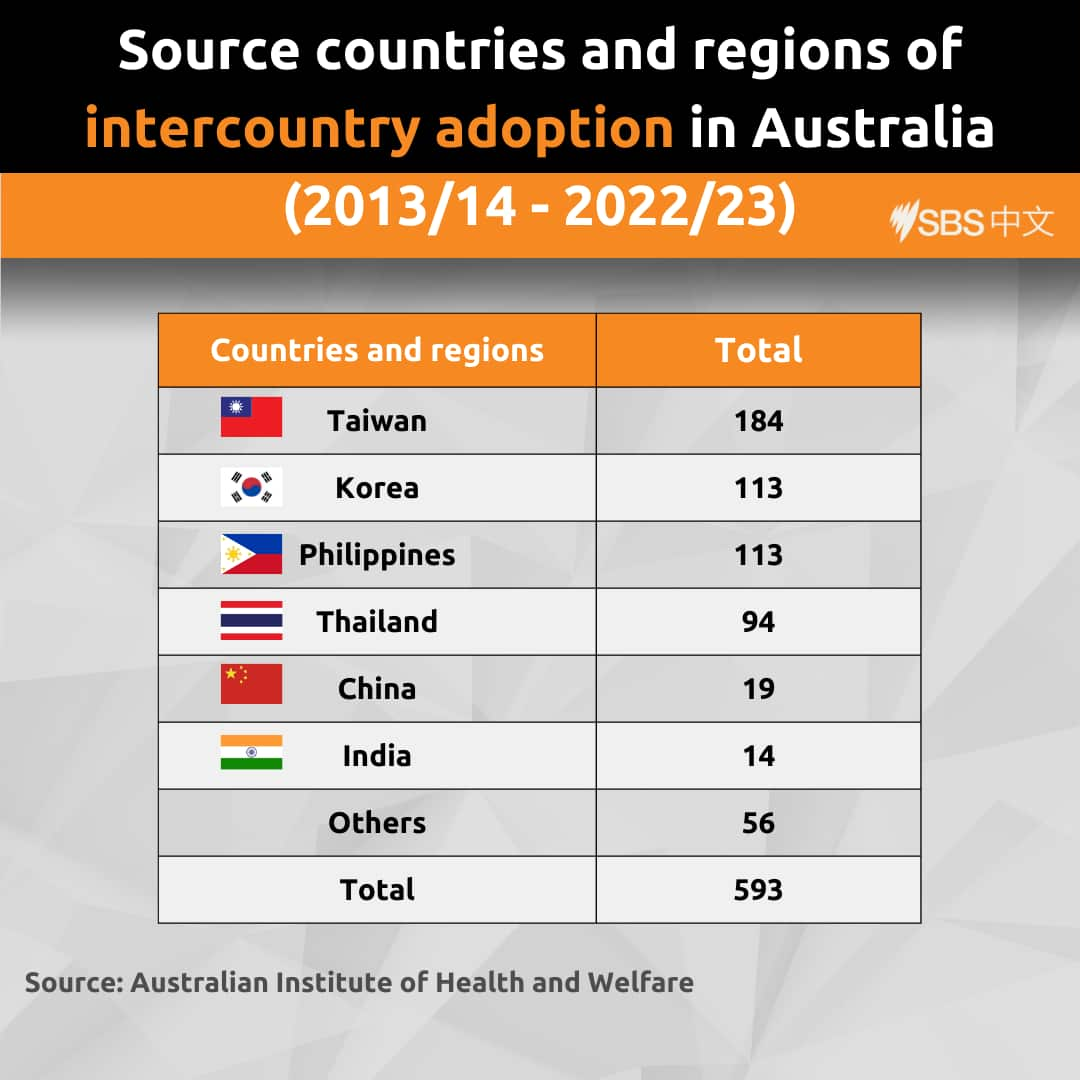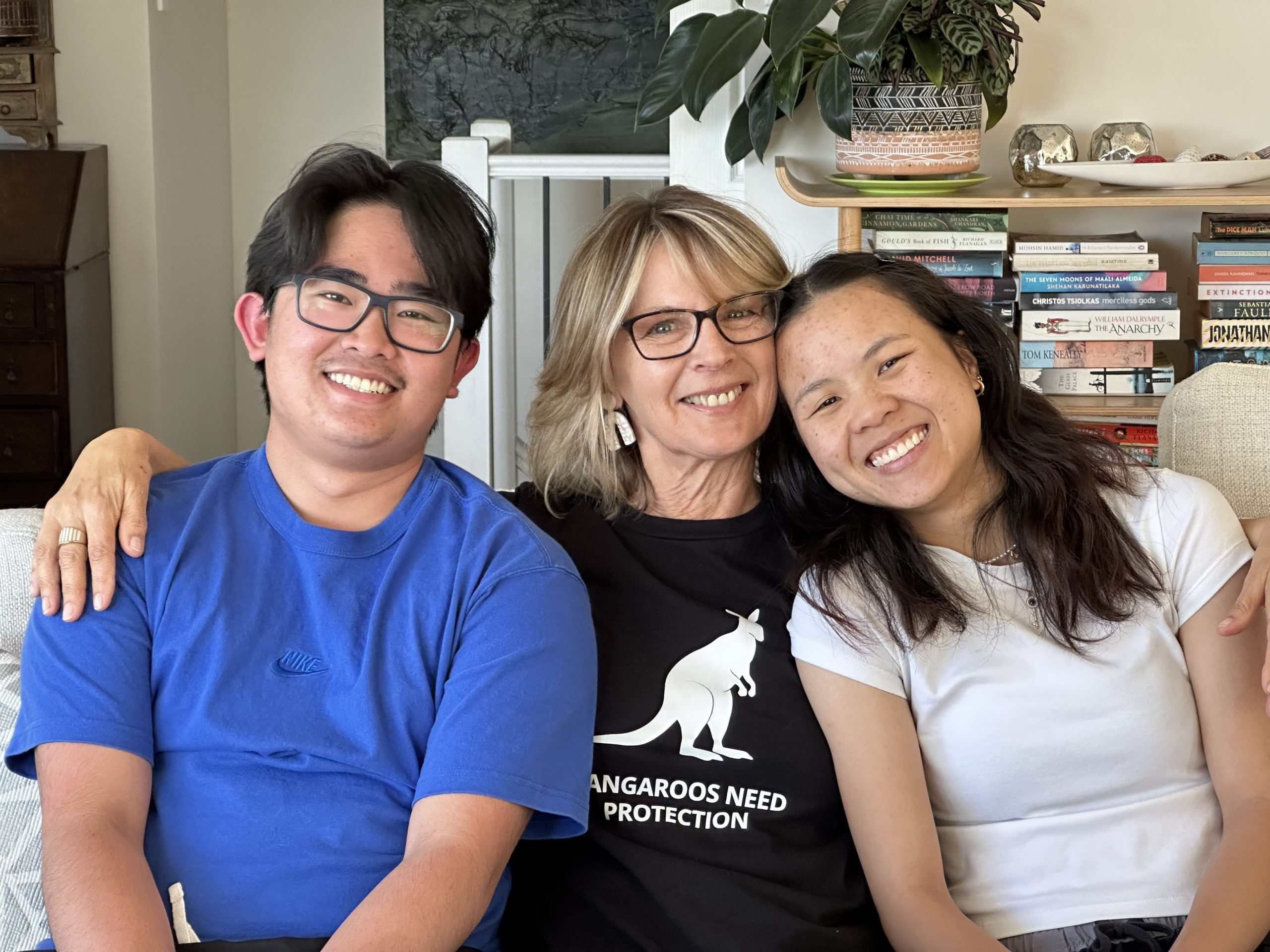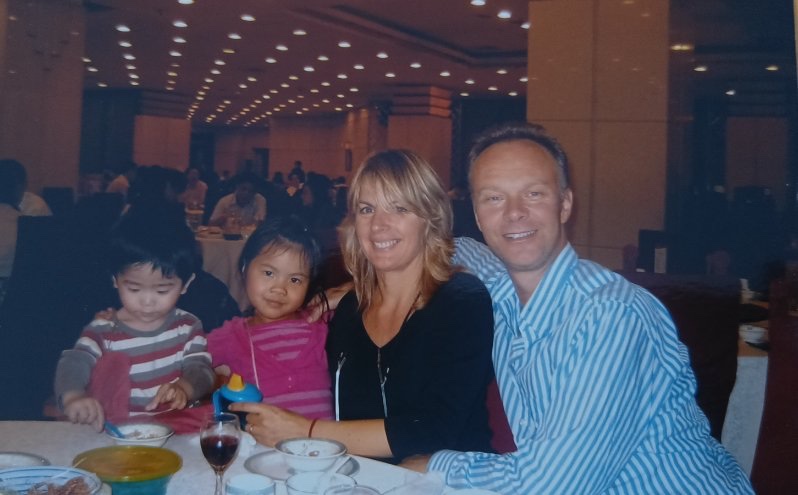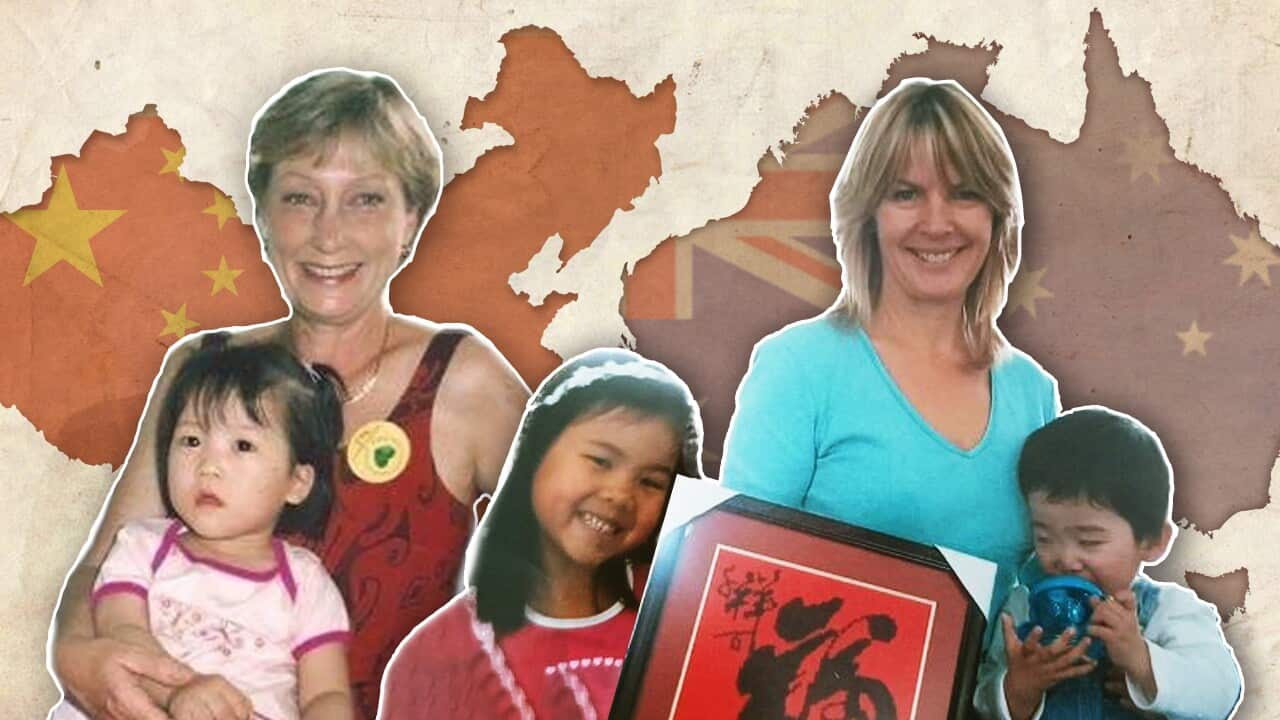Key Points
- China will no longer allow most foreign adoptions, saying the move is in line with global trends.
- The move comes amid China’s efforts to address its declining population and birth rate.
- Adoptive families in Australia say they worry about the future for the country’s orphans with special needs.
Balloons, fairy bread, and piñatas are some of Olivia Jin Sullivan’s fondest childhood birthday memories.
But as she grew older, she said her birthdays stirred complex emotions and raised questions about her adoption story.
“Why did my birth mother keep me in her tummy for nine months and then choose to leave me?” Olivia said.
Born on June 24, 2000, in Guangzhou, China, Olivia was adopted when she was 16 months old by Australian single mother Debbie Sullivan.
She is one of more than 700 Chinese children who have joined Australian families since 2000, according to Families with Children from China – Australia (FCC-A), a group supporting adoptive families and children from China, Hong Kong, and Taiwan.
Sixteen-month-old Olivia and her Australian adoptive mum at an orphanage in Guangzhou, China, in 2001 (left) and Olivia, 24, today (right). Source: Supplied
Now 24, she works for a media company in Newcastle, New South Wales.
Her middle name, ‘Jin’, means ‘beautiful things’, and is a part of her original Chinese name, ‘Dong Jin’ given by a doctor after she was found.
In September, China announced the end of international adoptions for Chinese children, except for cases where foreigners adopt children or stepchildren who are blood relatives.
“This is in line with the spirit of relevant international conventions,” Mao Ning, spokesperson for China’s Ministry of Foreign Affairs, said at a press conference.
“We are grateful for the desire and love of governments and adoptive families from relevant countries.”
A spokesperson for Australia’s Department of Social Services told SBS Mandarin that the cessation meant Australian families could no longer apply to adopt from China, which was one of the largest ‘sending countries’ for intercountry adoption in Australia.
However, it should have “no direct impact” on prospective Australian adoptive parents, as there were currently no active applications from Australia to China, the spokesperson said.
“The China-Australia intercountry adoption program has been inactive for many years, with no new adoptions since 2017,” the spokesperson added.
shows a significant decline in intercountry adoptions in Australia. In 2022-23, the number of overseas adoptions dropped by 93.5 per cent compared to the peak in 2004-05, falling from 434 to just 28.
Intercountry adoptions now make up only 13.9 per cent of all adoptions in Australia, totalling 201 last year.
Despite the end of adoptions from China, Taiwan and Hong Kong remain listed as partners for Australia’s intercountry adoption program.
The announcement comes as China faces its second consecutive year of population decline by 2.08 million, or 0.15 per cent, to 1.409 billion in 2023, following a drop of 850,000 in 2022, which had been the first since 1961 during the Great Famine of the Mao Zedong era.
The Chinese government has taken measures to reverse the country’s sharply declining birth rate and avert a looming demographic crisis, but the measures have had “minimal effect”, according to Dr Xiujian Peng, a senior research fellow at Victoria University specialising in China’s demography and labour markets.
In an effort to boost the birth rate, the government abolished the so-called ‘one-child policy’ in 2016, allowing married couples to have up to three children from 2021. Other incentives include childcare allowances, housing subsidies, and bonuses for newborns.
“The government has done its best to encourage people to have more babies, but the marriage rate continues to decrease,” Dr Peng said.
“This will lead to a further reduction in the fertility rate.”
“While the number of children involved in intercountry adoptions is not large, every child is precious to China if the fertility rate continues to decline so sharply,” she added.
Since China officially opened to international adoptions in 1992, more than 160,000 Chinese children have been adopted by families around the world, according to China’s Children International, an organisation created by and for Chinese adoptees.
Approximately half of these children were adopted by families in the United States.
‘End of an era’
Sydney mother Karin Wentworth-Ping was among the first to read about China’s decision to end intercountry adoptions. The news, which she found online, left her feeling “very emotional”.
“It marks the end of an era that we were deeply invested in,” she said.
“It connected me to two of the most beautiful people in the world.”
Adoptive mother Karin Wentworth-Ping (centre) with her two children, son Xiang Dian Wentworth-Ping (left) and daughter Anxia Wentworth-Ping (right). Source: SBS / Bella Chen
In 2004, Karin and her husband adopted their daughter, Anxia Wentworth-Ping, from Nanning, the capital of the Guangxi Zhuang Autonomous Region in southern China.
Four years later, they welcomed their son, Xiang Dian Wentworth-Ping, from Wenzhou in southeastern China.
Today, Anxia, 21, is attending university, while Xiang, 18, is preparing for his Higher School Certificate (HSC).
Reflecting on their adoption journey, she shared that her family often received messages telling the children they should be grateful for being adopted.
“But it’s us who are grateful. They didn’t need to be grateful,” she said.
Australian couple Richard Wentworth-Ping (right) and Karin Wentworth-Ping (second from right) and their two adoptive children. Credit: Supplied
Karin expressed support for China’s decision to end the intercountry adoption program, provided that children without parents could be well cared for within China.
However, she said she was also concerned that the closure might limit opportunities for her children to explore their origins.
“I thought that closing the program just felt like a door closed somehow.”
“Our children don’t know their parents and we just felt like we needed to keep all options open, all connections over with China.”
Like Karin, Olivia has mixed feelings about the policy change.
She said she believed it was beneficial for children to grow up with their Chinese culture and heritage through domestic adoption, sparing them from the identity struggles she faced as an adoptee in Australia.
“People call me a ‘banana’ because I’m yellow on the outside but white on the inside,” she said.
On the other hand, Olivia said she was worried about those who may not get adopted. According to Chinese officials, there were 343,000 orphans in China in 2019, many of whom had special needs.
For parents who have been waiting to adopt and have invested a lot of time, energy, and effort into the process, this news is “devastating”, she added.
“Now, with the ban, they may be left without support. Their journey will need to be restarted, or they may be forced to close this chapter altogether.”
